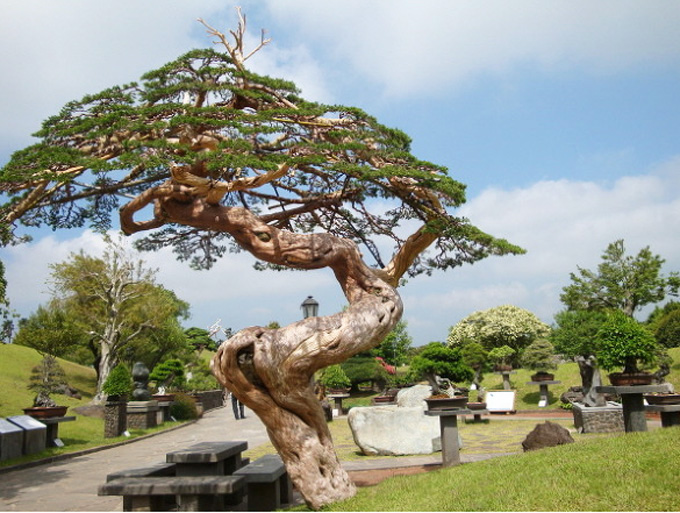 Though it’s not really a bonsai if it’s in the ground, this one is a very close cousin. This photo and all the photos in this post are from Stone Garden.
Though it’s not really a bonsai if it’s in the ground, this one is a very close cousin. This photo and all the photos in this post are from Stone Garden.
Our last post was our first ever on Korean bonsai, and, as one thing leads to another, here’s our second post on Korean bonsai. This time the bonsai reside at a place called Stone Garden, which happens to be on an island just south of South Korea and due west of Japan’s Kyushu Island. The island’s name is Jeju and judging by the photo and text at the bottom of this post, it’s a rather magnificent place, with warm enough weather to support almost sub-tropical plants (at least zone 7 plants).
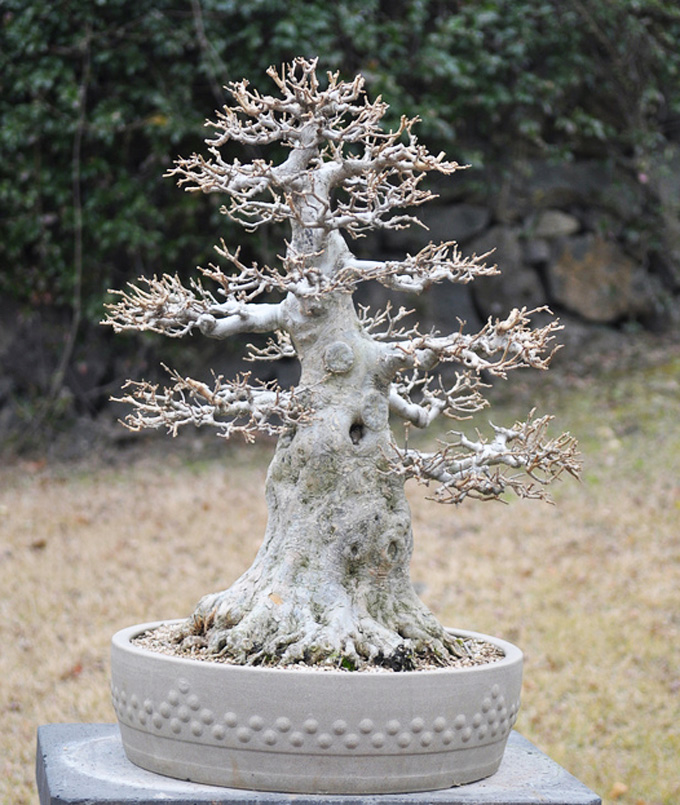 Is this a Trident maple? Whatever it is, it’s a bit of a break with convention to see such a stout tree, let alone a stout deciduous tree, in a bunjin pot.
Is this a Trident maple? Whatever it is, it’s a bit of a break with convention to see such a stout tree, let alone a stout deciduous tree, in a bunjin pot.
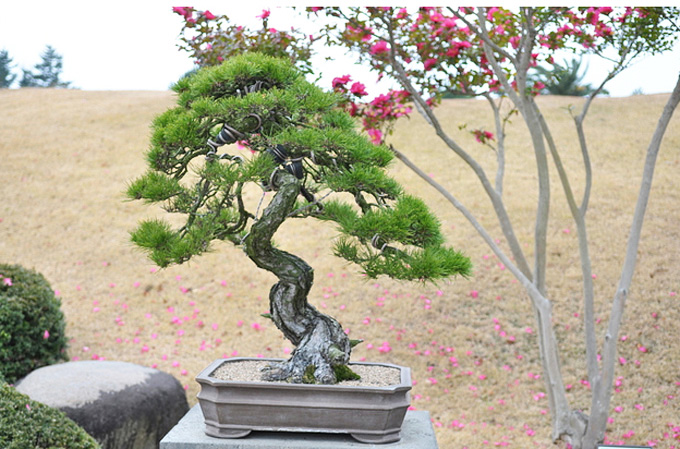 I’m going to guess that this is a Japanese black pine. Mostly because it looks like one. The tree to the right with the flowers looks like a Crape Myrtle, which happens to be a zone 7 plant.
I’m going to guess that this is a Japanese black pine. Mostly because it looks like one. The tree to the right with the flowers looks like a Crape Myrtle, which happens to be a zone 7 plant.
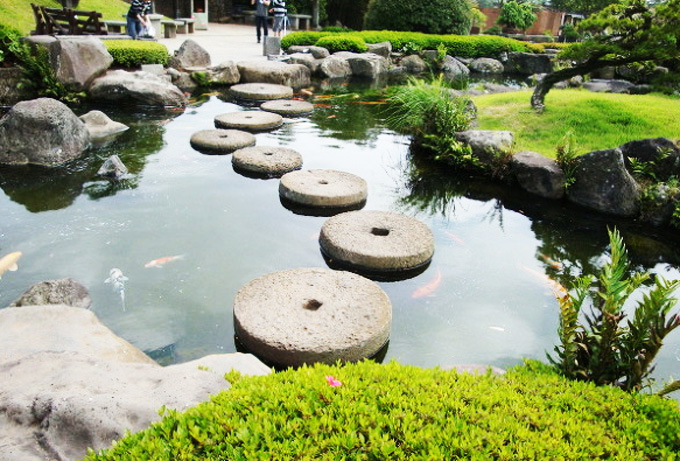 Stone Gardens is much more than just a bonsai garden. If you are interested, there are numerous photos that show off some luscious landscaping and great stone sculpture.
Stone Gardens is much more than just a bonsai garden. If you are interested, there are numerous photos that show off some luscious landscaping and great stone sculpture.
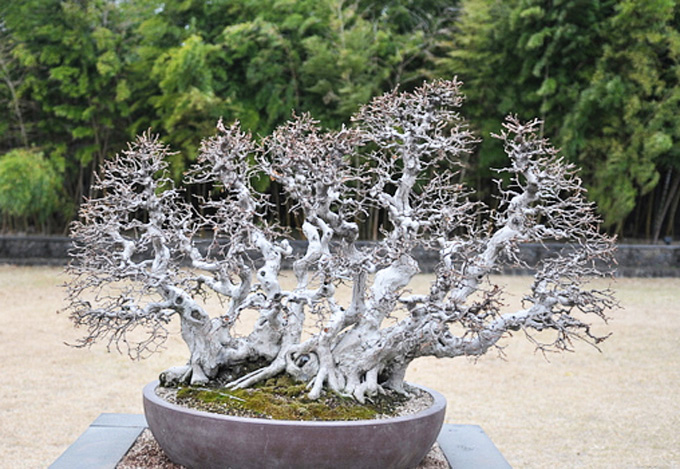 Do you think that all the trunks (nine?) on this wild tree are supported by the same roots?
Do you think that all the trunks (nine?) on this wild tree are supported by the same roots?
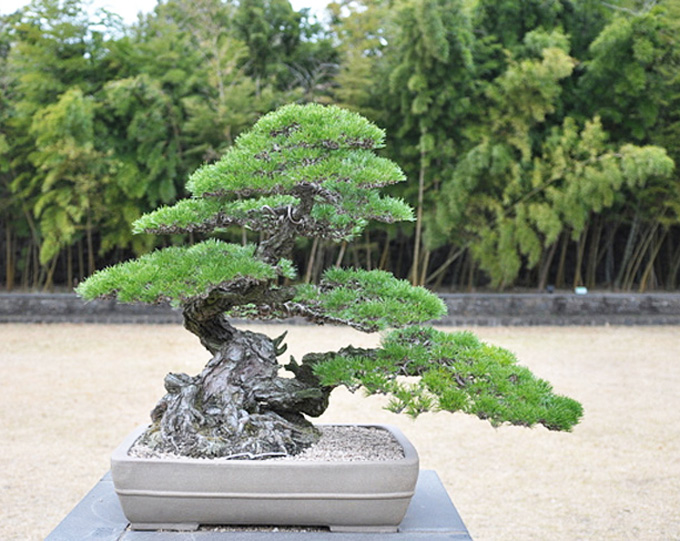 A powerful base and dynamic lines make for a great bonsai.
A powerful base and dynamic lines make for a great bonsai.
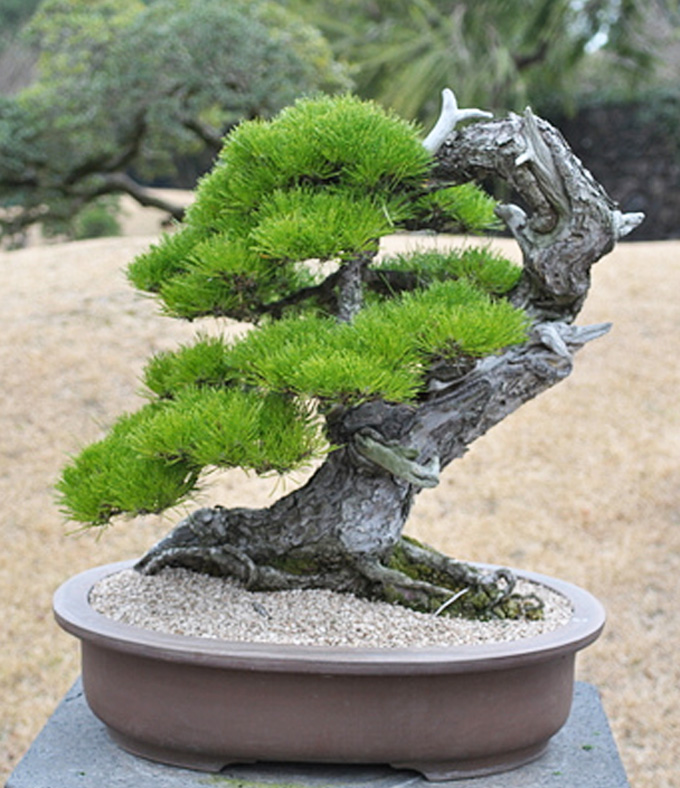 A strange tree. The wood imparts a feeling of centuries of rough weather and other wild hardships, while the foliage suggests an easy life with abundant nutrients. If the foliage were made more spare, in keeping with the feeling of the trunk, then a shallower, less dominating pot might work.
A strange tree. The wood imparts a feeling of centuries of rough weather and other wild hardships, while the foliage suggests an easy life with abundant nutrients. If the foliage were made more spare, in keeping with the feeling of the trunk, then a shallower, less dominating pot might work.
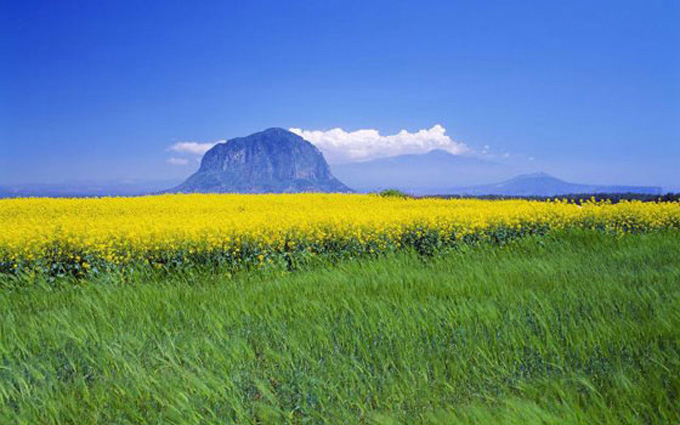
Jeju-do is a volcanic island located 130 kilometres off the southern coast of South Korea. It is the country’s largest island, smallest province and home to its tallest mountain, Halla-san, a dramatic-looking dormant volcano that rises 1,950 metres above sea level. The people of Jeju have developed a culture and language that are distinct from those of mainland Korea, and the island is famous for its matriarchal family structure, symbolized by the haenyeo (“sea women”), who make a living from deep-sea diving to harvest marine products.
Cheju island had orange trees when visited in 1973. These oranges were highly prized in colder parts of Korea.